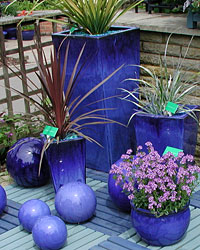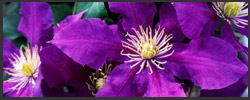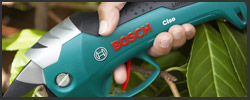YOU ARE HERE Garden Answers > Container gardening > Container & patio plant care
Container plant care
Spring and early summer are great times to plant up containers - pots, tubs, hanging baskets, window boxes - to bring summer colour to the garden. And, of course, you can use pots and containers in any size of garden - even if you only have a patio.
Supplied by Love The Garden
 |
At this time of year it seems like there's so much to do. Everything in the garden is crying out for attention, and garden plant pots are no exception. Whether it is potting up new plants or attending to established plants in pots, all the hard work done now will pay dividends once summer comes. Here's what to do to ensure you have containers of healthy, thriving plants.
 Planting up a new pot
Planting up a new pot
Choose a container that's at least large enough to hold the plant's roots comfortably, and has plenty of drainage holes.
Next, add a layer of broken crocks, gravel or polystyrene chunks (which are especially good for large containers as they weigh very little) to provide good drainage.
Now add a growing medium. Garden soil is unsuitable, so a proprietary potting compost should be used, for example, Miracle-Gro Moisture Control Compost, which is very efficient at retaining moisture and also contains a controlled-release plant food that will act for six months. If you're planting an acid-loving/lime-hating plant like an azalea, you'll need a lime-free ericaceous medium like Miracle-Gro Camellia, Azalea and Rhododendron Compost.
If you're using a standard compost, it's a good idea to mix in a water-retaining gel, such as Miracle-Gro Moisture Control Gel. Not only will a container-bound plant need three times more water than if grown directly in the soil, but it will also be extremely susceptible to drying out. The gel will provide an extra layer of protection against water loss.
Now, make a hole and plant the plant.
Finally, add a mulch. Anything that will reduce evaporation will do, from bark chips, to brightly coloured glass gravel.
Be brave, be creative, there really is a wealth of choice.
Repotting and potting on
Plants can become pot bound. That is, their roots become densely packed in the pot, meaning that little moisture is withheld, and nutrients in the compost will be seriously dimished. If this isn't addressed quickly, the plant will become sickly and eventually die. The first thing to decided is whether to move the plant to a bigger pot (potting on) or, repot back into the same container. This is really a personal choice, but where containers are concerned, bigger is always better.
If potting on:
- Remove the plant from its current pot.
- Tease out compacted roots.
- Take the old container, place it in the new one and fill the gap with potting compost.
- Remove the old container, and place the plant in the hole.
- Firm the compost, adding more if need be.
- Finally, mulch.
If repotting:
- Remove the plant from the pot.
- Carefully remove old layers of compost and tease out roots.
- Add compost to the base.
- Put the plant back in the container, adding more compost as needed.
- Mulch.
Topdressing and feeding
Established pots that don't need any drastic action will still need to have nutrients replenished. Topdressing is simply the replacement of the top 2.5-5cm (1-2in) of old compost with fresh compost at the start of the growing season.
Having topdressed, it's important to establish a good feeding regime. Use a controlled-release plant food such as Miracle-Gro Controlled Release Plant Food, which will work for six months. Also feed every two weeks or so as you water using Miracle-Gro All Purpose Soluble Plant Food.
More information on growing plants in containers in Garden Answers >>
If you want to know more, or if you've got a gardening problem you need help with, then send an e-mail to: info@gardenforumhorticulture.co.uk


